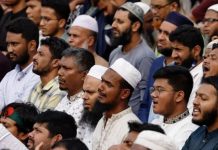India is gearing up for its mammoth electoral exercise as voting is set to commence in phases from April 19, announced by the country’s election authority. With nearly one billion eligible voters, this election marks the world’s largest democratic event.
The electoral battleground features incumbent Prime Minister Narendra Modi, a two-term strongman, leading his Hindu nationalist Bharatiya Janata Party (BJP) and its regional allies. They face off against a coalition of around two dozen opposition parties, led by the Congress party, in what surveys indicate as a likely victory for Modi’s BJP.
If successful, Modi, aged 73, would secure a historic third consecutive term, a feat achieved previously only by Jawaharlal Nehru, India’s first prime minister and independence hero.
Modi has been actively campaigning for months, criss-crossing the nation to inaugurate projects, address public gatherings, and partake in religious events. His speeches highlight economic growth, infrastructure development, welfare programs, and a Hindu reawakening agenda, notably marked by the inauguration of a grand temple to Lord Ram.
Setting ambitious targets, Modi aims for 370 seats for BJP and over 400 for the National Democratic Alliance (NDA) it leads in the 543-member lower house of parliament, surpassing their 2019 performance, which was the party’s best ever.
Challenging Modi is the Indian National Developmental Inclusive Alliance (INDIA), an alliance of opposition parties spearheaded by Congress. However, this coalition, formed last year, struggles with internal discord and seat-sharing disputes, hindering its ability to present a unified front against BJP.
Congress, which has governed India for a significant portion of its post-independence history, faces dwindling support since Modi’s ascension to power. The party’s campaign emphasizes issues such as unemployment, rural distress, crony capitalism, affirmative action for backward castes, and the need to combat religious polarization and hatred.
With nearly 970 million registered voters and over one million polling stations, this electoral spectacle sees participation from approximately 2,400 political parties vying for victory.

















